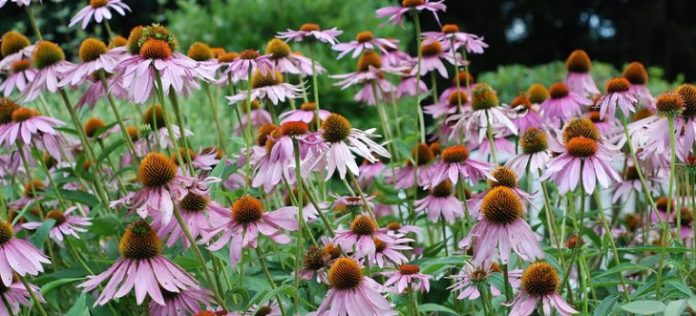by Jay Watson, Co-Executive Director, New Jersey Conservation Foundation
It’s easy to feel discouraged as we face the enormity of climate change and the mounting extinctions of plant and animal species. We may wonder: What can one person possibly do to help avert this unfolding catastrophe?
Douglas Tallamy has a powerful message: Don’t give up, because every single person can make a difference!
A New Jersey native and a professor in the Department of Entomology and Wildlife Ecology at the University of Delaware, Tallamy firmly believes that if millions of individuals take small actions, we can save the natural systems we all depend on for plentiful food, clean water, clean air and a stable climate.
In his book, Nature’s Best Hope: A New Approach to Conservation that Starts in Your Yard, Tallamy advises people to think globally but act locally. Even in the smallest of yards, people can grow native trees, shrubs and plants that are the building blocks of the world’s food web.
Tallamy’s inspiration for the book builds off the work of the late biologist and author E.O. Wilson. In his book Half Earth, Wilson proposed that humanity preserve half of the world’s land for nature.
Though it seems like a great idea, it’s not clear how it could be accomplished. Nearly half the land on the planet is already used for agriculture, Tallamy noted, and the Earth’s population of about 8 billion people has developed much of the remainder.
Setting land aside as parks and nature preserves is helpful, but not a cure-all. Tallamy points out that most of America’s biggest national parks, like the Grand Canyon, are magnificent landscapes but not necessarily places that support the diversity of plants and animals needed to keep the planet functioning.
To realize Wilson’s dream, Tallamy has a vision of enlisting private landowners to help restore natural habitats and biodiversity. Currently, lawns in private ownership cover about 40 million acres of land in the United States. What if some of these lawns were converted back to patches of habitat to help our planet’s species?
Tallamy is hoping to convince homeowners to create what he calls “Homegrown National Parks.” These little havens of biodiversity could be located on residential properties of all sizes, even those a mere fraction of an acre.
If half of America’s lawns were converted to habitat patches with native trees and plants, he said, it would add up to an interconnected 20 million-acre Homegrown National Park. Tallamy believes that because nature is resilient, many species at the brink of extinction can recover if given enough acres with adequate food and shelter.
Growing more native trees, shrubs and plants also helps fight climate change, since plants capture carbon and pump it into the soil. Plants produce oxygen, filter rainwater, and slow the journey of stormwater to the sea.
For Tallamy’s idea to work, people must be willing to give up some of the sterile, manicured lawns that have become American status symbols.
Functionally, lawns are dead zones for wildlife, providing neither food nor cover. Most American lawns are monocultures of non-native grasses that are often treated with chemical fertilizers, herbicides and pesticides to kill insects and other plants considered “weeds.” Landscaping often consists of non-native shrubs and flowering plants that don’t support the native insects at the base of the food chain.
For example, monarch butterfly caterpillars have only one food source: the leaves of native milkweed plants. If there are no milkweeds growing in your neighborhood, you won’t be seeing many monarch butterflies in the summer. The dependence of monarchs on milkweed is just one example; nature is full of species with specialized relationships that have evolved together over many thousands of years.
The beauty of the Homegrown National Parks concept is that everyone can do something. If you own land, you can put in a few native plants, get rid of invasive non-natives, plant an acorn that will grow into an oak tree, or leave some fallen autumn leaves on the ground. If you don’t own land, you can volunteer at a local park or preserve, or for a conservation organization recreating natural habitats for native species.
I was thinking about Nature’s Best Hope this past week as landscapers with blowers and mowers burned fuel and made noise while removing the leaves from lawns on my block. Tallamy writes about the importance of leaf litter as shelter for native insect populations, and the value of decomposing leaf matter to soil health when left in place.
He acknowledges that there’s pressure on people to conform to American society’s expectation of green, “swept” lawns. Those who swap the manicured look for patches of native habitat might not thrill their neighbors … unless they can convince their neighbors of the urgent need to grow the native plants that support the insects that make the rest of the food web possible. One fabulous benefit to landscaping for native wildlife is attracting a lot more beautiful birds and butterflies.
Humans are a part of nature, not apart from nature. We must coexist for us all to survive. As Tallamy points out, every person on Earth depends on the services provided by nature, like filtering water, storing carbon and pollinating crops. We all have a responsibility for helping to protect what we can!
During this season of giving, I hope everyone will consider giving back to nature by committing to at least one small action in the coming year. I highly encourage you to read Nature’s Best Hope – and give it to someone as a holiday gift!
To learn more about the Homegrown National Park movement, and get practical advice for what to plant on your own property, go to https://homegrownnationalpark.org/. The website also includes links to videos of Tallamy explaining the ideas in Nature’s Best Hope.
And for information about preserving New Jersey’s land and natural resources, visit the New Jersey Conservation Foundation website at www.njconservation.org or contact me at [email protected].


